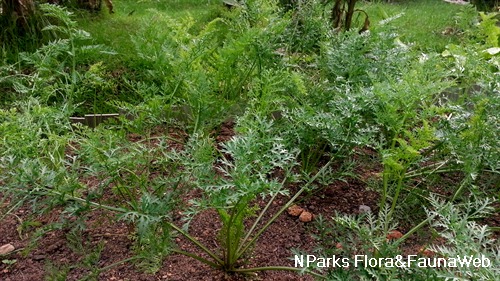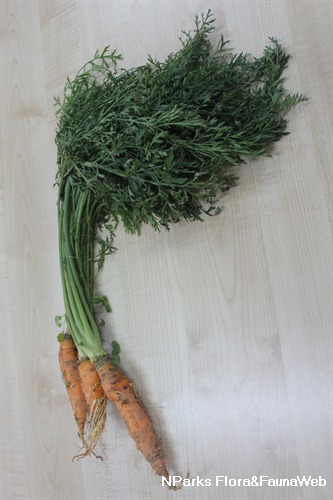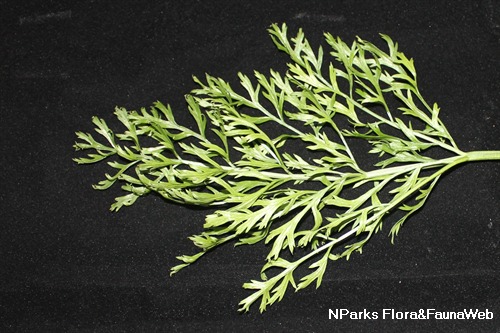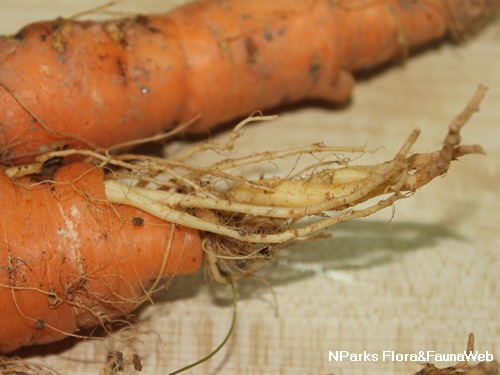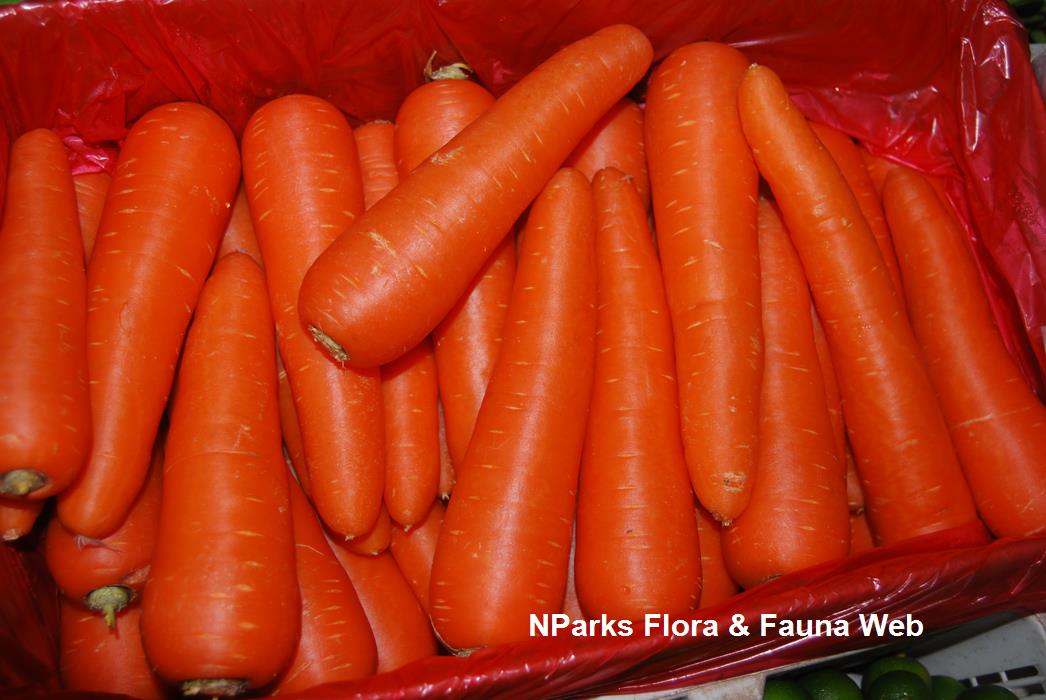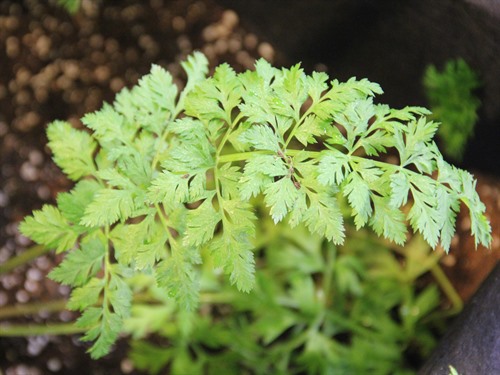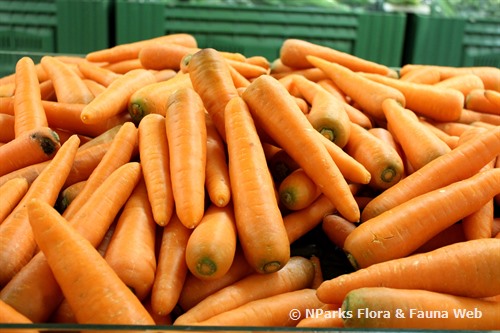
Back
Daucus carota subsp. sativus
| Family Name: | Apiaceae (Umbelliferae) |
| Synonyms: | Daucus carota var. sativus |
| Common Name: | Carrot, 胡萝卜 |
Name
Classifications and Characteristics
| Plant Division | Angiosperms (Flowering Seed Plants) (Dicotyledon) |
|---|---|
| Plant Growth Form | Herbaceous Plant |
| Lifespan (in Singapore) | Biennial, Annual |
| Mode of Nutrition | Autotrophic |
Biogeography
| Native Distribution | Of cultivated origin |
|---|---|
| Native Habitat | Terrestrial (Agricultural Land) |
| Preferred Climate Zone | Tropical, Sub-Tropical / Monsoonal |
| Local Conservation Status | Non-native (Horticultural / Cultivated Only) |
Description and Ethnobotany
| Roots | Taproot thickened, fleshy, straight, conical to cylindrical, orange(most common). |
|---|---|
| Foliage | 8-12, growing in a rosette with long petiole, leaf blade 2-3 pinnate, the segments divided into often linear ultimate lobe |
| Flowers | The flowering stalks few to several, , branched, each branch ending in a compound umbel; each umbel comprising 50 or more umbellets, each of which has up to 50 flowers; flowers mainly bisexual in primary umbels, in umbels of higher order an increasing number of male flowers may occur in addition to bisexual flowers. |
| Fruit | Oblong-ovoid schizocarps, 2-4mm long, at maturity splitting into 2 mericarps, primary ridges ciliate, secondary ridges with hooked spines. |
| Ethnobotanical Uses | Edible Plant Parts : Edible Leaves, Edible Roots, Edible Storage Organs Food (Fruit or Vegetable): The roots are consumed raw or cooked, alone or in combination with other vegetable, as an ingredient of soups sauces and in dietary compositions. Young leaves are edible as a leaf vegetable, but are rarely eaten by humans. Medicinal: Carrots are rich in carotenes, some compounds that the liver transforms into vitamin A, which guarantees the good health of the vision by forming a purple pigment that the eye needs in order to be able to see in dim light. Thus people who suffer from night blindness would benefit from the use of carrots on a regular basis. Carrots can also externally be used to cure skin problems such as eczema, wounds, burns or sunburns. Others medicinal uses include Tonsillitis, colitis, appendicitis, anemia, gravel, blood poisoning, ulcers, rheumatism, indigestion, poor teeth, acne, cancer, etc. |
Landscaping Features
| Desirable Plant Features | Ornamental Foliage |
|---|---|
| Landscape Uses | Parks & Gardens, Container Planting |
| Thematic Landscaping | Economic Garden |
Plant Care and Propagation
| Light Preference | Full Sun |
|---|---|
| Water Preference | Moderate Water |
| Rootzone Tolerance | Moist Soils, Well-Drained Soils |
| Propagation Method | Seed |
| Propagation Method Remarks | Carrot Top Propagation: Cutting the existing carrot top with their greens attached to the top. |
Foliar
| Foliage Retention | Evergreen |
|---|---|
| Mature Foliage Colour(s) | Green |
| Foliar Arrangement Along Stem | Rosulate / Rosette |
| Foliar Attachment to Stem | Petiolate |
| Foliar Margin | Pinnately Lobed / Pinnatifid |
Non - Foliar and Storage
| Root Type | Underground (Tap Root) |
|---|---|
| Specialised Storage Organ(s) | Underground (Swollen Taproot) |
Floral (Angiosperm)
| Flower Colour(s) | White |
|---|---|
| Flower Grouping | Cluster / Inflorescence |
| Flower Location | Terminal |
| Inflorescence Type | Compound Umbel |
Image Repository
Others
| Master ID | 31526 |
|---|---|
| Species ID | 5923 |
| Flora Disclaimer | The information in this website has been compiled from reliable sources, such as reference works on medicinal plants. It is not a substitute for medical advice or treatment and NParks does not purport to provide any medical advice. Readers should always consult his/her physician before using or consuming a plant for medicinal purposes. |


